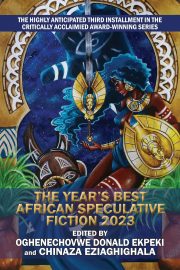Guest Post: One Author’s First Month in KDP Select
Last December, I blogged about Amazon’s KDP Select program, which allows KDP authors to participate in Amazon’s Kindle Owners’ Lending Library and be paid per borrow from a fund established by Amazon.
Two weeks ago, Amazon issued a press release charting KDP Select’s performance during its first month. KDP Select books were borrowed 295,000 times in December, with authors earning $1.70 per borrow. Total earnings for the top ten authors exceeded $70,000. The press release features four authors who each earned four figures.
These are amazing numbers. But as Laura Hazard Owen of PaidContent notes, questions about KDP Select remain–such as, how much money did the average participating author make? Today’s guest blog post from author Heather Wardell provides some insight into that question.
————————————-
Thanks to Victoria for allowing me to let you know how my first month in the KDP Select program turned out. I don’t usually broadcast my sales numbers, since I try hard to focus more on the books than the bucks, but I think it’s important to give my fellow authors the benefit of my experience.
But first, a brief summary of my career so far, so you can see where you are in relation to me.
My first book, Life, Love, and a Polar Bear Tattoo, went up as a free download in December 2008 everywhere but Amazon (because I couldn’t figure out how to make it free there) and has been free ever since. I listed my second book at Amazon for 99 cents in May 2010 and sold a grand total of 3 books that month. I continued on anyhow, releasing two more 99-cent books in 2010 and two more in early 2011. My sales were better than three a month, but not by much!
In June of 2011 Polar Bear finally went free on Amazon. It shot straight to the top and dragged my other books along with it, including the two books I released after it in 2011. I prefer not to give all my sales results but I will share the details of my KDP Select book and a comparative novel in this post.
When Amazon called to offer me access to the KDP Select program, I was interested, but the exclusivity clause (a KDP Select book must be available only on Amazon) gave me pause. While I sell easily ten times as many books on Amazon as I do at all other retailers combined, my Facebook fan page is almost evenly split between Kindle and Nook users. The idea of taking my books away from those people, many of whom have been loyal readers since the beginning, did not appeal.
But neither did missing out on KDP Select entirely, so I decided to enroll Seven Exes Are Eight Too Many (hereafter called Seven) in the program because it’s my only pure stand-alone book. All the others are set in Toronto and feature returning places and people, so removing one of those from the other retailers didn’t make sense to me. I felt this would be my best way of testing the program without unduly inconveniencing my readers.
I won’t spell out the details of the KDP Select program since I know they’ve been well-covered elsewhere (such as right here at Writer Beware). Essentially, I would earn a share of the $500,000 pool for each borrow of Seven. I was hoping for additional exposure and possibly a huge payout from the program. Let’s see how it turned out.
Seven’s raw sales numbers don’t tell much of a story, really, since any number of things could affect sales of a given book. Therefore, I’m going to compare its sales to those of my book Stir Until Thoroughly Confused (Stir for short). Both of these books have been out for a while (since June 2010 for Seven and January 2011 for Stir) and their sales are relatively close.
I usually only check my sales numbers once a month (which lets me see what’s going on but also prevents me from obsessing over the numbers) but I took a snapshot each morning from December 8th to 31st. I won’t bore you with all the numbers (although a graph below shows them if you’re interested), but I will share three key dates with you and then tell you what I think those numbers say.
On December 8th, right after KDP Select was announced, Seven had sold 138 books in December (and already had 2 borrows) and Stir had sold 140. At this point, both books were 99 cents. I know all the arguments for raising prices for full novels, but I also know how many emails I get thanking me for keeping the price low because it makes it easier to buy all my books, so I hadn’t planned to charge more.
Over the next week or so, borrows trickled in, a few a day, and by December 19th Seven had been borrowed a grand total of 14 times. While I didn’t know how many borrows other people’s books were receiving (one of the real oddities of the KDP Select program is the whole “I make less if others move more books” thing) I suspected it was more than 14.
I also suspected I knew the cause. Why would anyone borrow a 99 cent book when they could borrow a $9.99 one instead? Frankly, having 14 borrows surprised me. So I decided to try raising Seven’s price to $2.99, both to see how it affected borrows and what it did to sales themselves.
Between December 8th and the 21st when the price increase kicked in, Seven had sold 255 books, with 14 borrows on top of that, and Stir had sold 222. Reasonably neck-and-neck.
Between December 21st and 31st, the race changed. Seven at $2.99 sold 154 copies during that time, and had an additional 21 borrows for a total of 547 sales and 35 borrows during December. Stir sold 310 copies in that time for a total of 693 in December. The graph below shows that Seven was hit hard by its price increase. While Stir had a nice post-Christmas peak, and my other books showed a similar pattern, Seven didn’t even reach its early December levels during that time.
Raising Seven’s price certainly reduced the number of sales in the last ten days of December. However, earnings during that same time period are a different story. I earned about $2 on each copy of Seven at $2.99, so around $308, and only 35 cents on each Stir, for a total of $109. I think it’s important for authors to decide whether they want to maximize copies sold or income; it seems to me that you can’t go after both goals at once.
(For the record, I haven’t yet decided whether to leave Seven at $2.99. I am firmly on the “as many readers as possible” side of the question and the lower sales for Seven don’t sit well with me. However, I did put out a collection of four of my books for $2.99. I actually earn more from one sale of the collection than from selling each of the books individually, and the reader pays less. Win-win!)
Back to KDP Select. Raising the price to $2.99 did increase the borrowing as I’d expected, since Seven had 14 borrows from December 8-21 and 21 in the shorter time from December 21-31. Still, the total was only 35. On its own, though, the number meant nothing. Whether it was good, bad, or indifferent depended on how the other KDP authors had done.
If you’ve read the Amazon press release you know how the other authors did. If not, here’s the scoop: there were 295,000 borrows in December, and each borrow therefore earned $1.70 of the $500,000 pool. I received 0.0119% of the borrows, and my ‘huge payout’ was $59.42.
In that same press release, Amazon stated that the average payout was 26% of what that particular book earned. Seven earned $549.60 on sales in December, so its payout was almost exactly 10%. This, of course, doesn’t mean that the average isn’t 26%, but it certainly wasn’t in my case.
So, was I smart to sign up for KDP Select? I can give that a qualified maybe. The pool for January has been raised to $700,000, and as of January 24th Seven (still priced at $2.99) has already been borrowed 40 times. Financially, I’m not sure being in the program is doing me a huge amount of good but I also don’t think it’s damaging me too badly.
At this point I see the biggest benefit of the program, ironically, as the option to earn no money at all. A book in the program can be made available for free for up to five days every 90 days. I’m doing a blog tour January 23-27 and so made Seven free for the same time period. It’s now been free for about 1.5 days, and it’s currently ranked #6 on the free books list and has had over 25,000 downloads. Granted, I make no money from those downloads, but I’m certain I’ve reached new readers and some of those readers will buy my other books.
Do I regret joining KDP Select? Definitely not. I wanted to know what would happen and I suspect I have reached a few people who wouldn’t otherwise have heard of me. Will I register all of my books? Also definitely not. I don’t like the exclusivity clause; even though financially I wouldn’t be that affected I hate the idea of cutting out potential readers who chose not to buy a Kindle, and I’m also not a fan of putting all my electronic eggs in Amazon’s basket. While I do get most of my sales there, I am reluctant to cut off the other avenues. It’s obviously good for Amazon to have exclusivity, but I’m not sure it’s good for anyone else.
I hope this has been informative for my fellow authors. Please feel welcome to pick up my always-free Life, Love, and a Polar Tattoo for any ebook format, and Seven Exes Are Eight Too Many is free on Kindle until January 27th.
Heather Wardell writes women’s fiction with depth, humor, and heart. Visit her at www.HeatherWardell.com.




